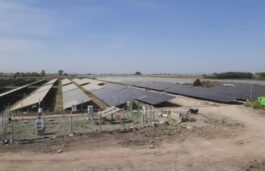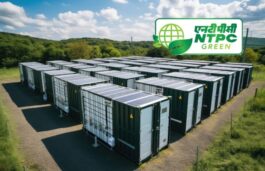Highlights :
- The JERC order for a firm in Puducherry highlights the challenges for faster solar adoption when the limit on net metering is set quite low.
- Net metering remains a much more attractive option for corporates over say Open access sourcing of renewables, but comes with a very hard limit in most states.
 CERC Allows Adani Subsidiary Compensation For 'Change of Law' Events
CERC Allows Adani Subsidiary Compensation For 'Change of Law' Events The Joint Electricity Regulatory Commission for the State of Goa & Union Territories has rejected the petition filed by Puducherry-based Rane Brake Lining, seeking relaxation of provision 4.4 of JERC for State of Goa and UTs (solar PV grid interactive system based on net metering) Regulations 2019. The provision imposes a cap on maximum solar generation capacity to be installed at consumer premises.
The firm asked the JERC to approve the complete (2 MW) solar power plant installed in its factory premises as a captive power plant. It also pleaded with the Commission to direct the Electricity Department, Puducherry to provide grid connectivity to the additional installed capacity of 830 KW in the existing solar power plant with single net metering arrangement while also asking the Electricity Department of Puducherry to provide energy banking facilities accounted on annual basis with the applicable banking charges as determined by the Commission.
Rane Brake Lining maintained that in order to back its corporate initiative of going green, the firm intends to install an additional capacity of 830 KW of solar power augmenting to the existing installed capacity of 1170 KW and also utilize the entire solar energy generated from the said plant for captive use.
It added that its electricity consumption of the factory for a typical month is around 4,65,000 kWh. Whereas, the solar energy generated from the existing installed capacity of 1170 is around 1,45,000 units per month, which serves only one third of the firm’s energy requirement. It expressed its intention to augment the quantum of energy consumption sourced from the solar power.
The firm further cited the Electricity Act, 2003 and the Regulations framed to encourage green energy development across the nation and the notification of the draft Electricity that encourages renewable energy through Green Energy Open Access) Rules 2021, to achieve target capacity installation of renewable energy of 175 GW in the country.
Additionally, it also stated Rule 4(2) (A) and Rule 8 of Ministry of Power’s draft electricity that provides no capacity limitation for installation of the power plant from renewable energy sources behind the meter for own generation and use and no injection of the such power into the grid. Rane Brake supported this by saying that the complete solar power plant installed in its factory premises is owned by it and thus the same may be treated as captive power plant “Own Generation- Behind the Meter” as per provisions under the Electricity Act 2003 and the Electricity Rules 2005 and as recommended in the Ministry of Power Draft Rules.
The Provision 4.4 of JERC for the State of Goa and Union Territories (Solar PV grid interactive system based on net metering) Regulations, 2019, however, states that it is not possible to provide approval for the additional 830 KW in the existing power plant capacity of 1170 KW net metering as the aggregate capacity exceeds the contracted demand of 1300 KvA in the existing service connection, as per the Electricity Department.
Thus, the commissions order, while ruling out use of renewable energy from ‘captive’ solar based on net metering, does not prevent Rane Brake Linings from sourcing the remaining or even all of its power requirements from a separate developer who supplies from a solar plant elsewhere. The key issue being the ease of these open access rules, which vary from state to state.
The order, while sticking to the letter of the law on local power department rules, does highlight the attractiveness of net metering in case of renewable energy, and the relative drop in the same when net metering is not allowed beyond the informal 1 MW limit. With the government pushing sourcing from open access looking at the larger market, firms will not be pleased with the relatively higher cost, and lower savings they make in that process, although it remains an attractive option in most states even after the extra charges vis a vis net metering.






























